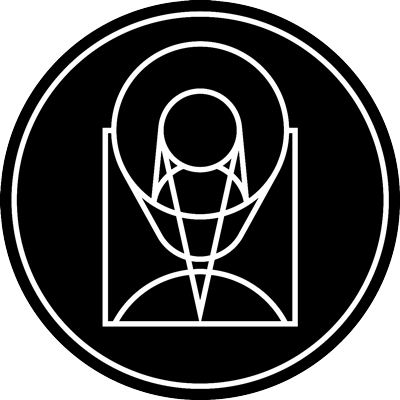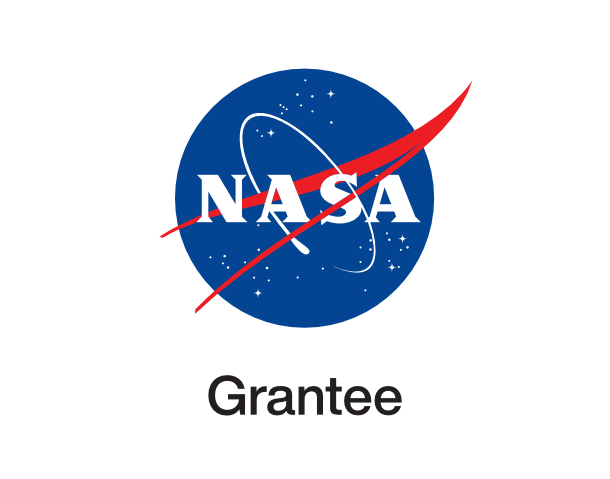Hubble Sees Giant Lensed Galaxy Arc

stsci_2012-08a February 2nd, 2012
Credit: NASA, ESA, J. Rigby (NASA Goddard Space Flight Center), K. Sharon (Kavli Institute for Cosmological Physics, University of Chicago), and M. Gladders and E. Wuyts (University of Chicago)
Thanks to the presence of a natural "zoom lens" in space, this is a close-up look at the brightest distant "magnified" galaxy in the universe known to date. It is one of the most striking examples of gravitational lensing, where the gravitational field of a foreground galaxy bends and amplifies the light of a more distant background galaxy. In this image the light from a distant galaxy, nearly 10 billion light-years away, has been warped into a nearly 90-degree arc of light in the galaxy cluster RCS2 032727-132623. The galaxy cluster lies 5 billion light-years away. The background galaxy's image is over three times brighter than typically lensed galaxies. The natural-color image was taken in March 2011 with the Hubble Space Telescope's Wide Field Camera 3.
Provider: Space Telescope Science Institute
Image Source: https://hubblesite.org/contents/news-releases/2012/news-2012-08
Curator: STScI, Baltimore, MD, USA
Image Use Policy: http://hubblesite.org/copyright/
 Color Mapping
Color Mapping
| Telescope | Spectral Band | Wavelength | |
|---|---|---|---|

|
Hubble (WFC3) | Infrared (blue grism) | 98.0 nm |

|
Hubble (WFC3) | Infrared (J) | 125.0 nm |

|
Hubble (WFC3) | Infrared (Pbeta) | 132.0 nm |

|
Hubble (WFC3) | Infrared (H) | 160.0 nm |

|
Hubble (WFC3) | Optical (U) | 390.0 nm |

|
Hubble (WFC3) | Optical (V) | 606.0 nm |

|
Hubble (WFC3) | Optical (I) | 814.0 nm |
| 1-Mar-11 | |||









- ID
- 2012-08a
- Subject Category
- D.5.1.8 D.5.5.3
- Subject Name
- RCS2 032727-132623, RCSGA 032727-132609
- Credits
- NASA, ESA, J. Rigby (NASA Goddard Space Flight Center), K. Sharon (Kavli Institute for Cosmological Physics, University of Chicago), and M. Gladders and E. Wuyts (University of Chicago)
- Release Date
- 2012-02-02T00:00:00
- Lightyears
- Redshift
- 1.701
- Reference Url
- https://hubblesite.org/contents/news-releases/2012/news-2012-08
- Type
- Observation
- Image Quality
- Good
- Distance Notes
- RCSGA 032727-132609 background galaxy is located at z = 1.701. The foreground galaxy cluster, RCS2 032727-132623, is located at z = 0.564.
- Facility
- Hubble, Hubble, Hubble, Hubble, Hubble, Hubble, Hubble
- Instrument
- WFC3, WFC3, WFC3, WFC3, WFC3, WFC3, WFC3
- Color Assignment
- Red, Red, Red, Red, Blue, Blue, Green
- Band
- Infrared, Infrared, Infrared, Infrared, Optical, Optical, Optical
- Bandpass
- blue grism, J, Pbeta, H, U, V, I
- Central Wavelength
- 098, 125, 132, 160, 390, 606, 814
- Start Time
- 2011-03-01T00:00:00, 2011-03-01T00:00:00, 2011-03-01T00:00:00, 2011-03-01T00:00:00, 2011-03-01T00:00:00, 2011-03-01T00:00:00, 2011-03-01T00:00:00
- Integration Time
- Dataset ID
- Notes
- 1
- Coordinate Frame
- ICRS
- Equinox
- 2000.0
- Reference Value
- 51.86837266900, -13.44344847802
- Reference Dimension
- 1971.00, 1332.00
- Reference Pixel
- 885.62576201625, 211.24242262538
- Scale
- -0.00001100846, 0.00001100846
- Rotation
- 53.02896096243
- Coordinate System Projection:
- TAN
- Quality
- Full
- FITS Header
- Notes
- World Coordinate System resolved using PinpointWCS 0.9.2 revision 218+ by the Chandra X-ray Center FITS X FITS Y EPO X EPO Y 589.52 283.71 1014.53 447.64 680.62 327.64 1311.35 588.85 466.61 432.48 617.41 927.53 615.51 201.31 1098.81 180.67 427.40 233.76 491.74 283.35 808.73 197.27 1723.35 168.57 507.62 284.82 750.07 450.68 Center Pixel Coordinates: 985.50 51.86356869410 666.00 -13.44130849483
- Creator (Curator)
- STScI
- URL
- http://hubblesite.org
- Name
- Space Telescope Science Institute Office of Public Outreach
- outreach@stsci.edu
- Telephone
- 410-338-4444
- Address
- 3700 San Martin Drive
- City
- Baltimore
- State/Province
- MD
- Postal Code
- 21218
- Country
- USA
- Rights
- http://hubblesite.org/copyright/
- Publisher
- STScI
- Publisher ID
- stsci
- Resource ID
- STSCI-H-p1208a-f-1971x1332.tif
- Resource URL
- https://mast.stsci.edu/api/latest/Download/file?uri=mast:OPO/product/STSCI-H-p1208a-f-1971x1332.tif
- Related Resources
- http://hubblesite.org/newscenter/archive/releases/2012/08
- Metadata Date
- 2022-07-06T00:00:00
- Metadata Version
- 1.2
Detailed color mapping information coming soon...






